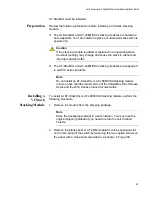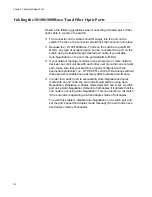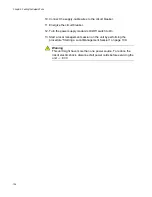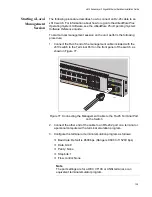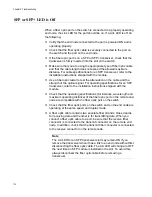
Chapter 4: Cabling the Network Ports
102
Cabling the 10/100/1000Base-T and Fiber Optic Ports
Observe the following guidelines when connecting a twisted pair or fiber
optic cable to a port on the switch:
The connector on the cable should fit snugly into the port on the
switch. The tab on the connector should lock the connector into place.
Because the 10/100/1000Base-T ports on the switch are auto-MDI/
MDI-X, any type of network device can be connected to a port on the
switch using a straight-through twisted pair cable. If you disable
Auto-Negotiation on the port, the port defaults to MDI-X.
If your network topology contains a loop where two or more network
devices can communicate with each other over more than one network
path, make sure that your switch is properly configured with the
appropriate protocol(s); i.e., STP, ESPR, LACP, etc. Data loops without
these protocols enabled can adversely affect network performance.
In order for a switch port to successfully Auto-Negotiate its duplex
mode with an end node, the end node should also be using Auto-
Negotiation. Otherwise, a duplex mode mismatch can occur. A switch
port using Auto-Negotiation defaults to half-duplex if it detects that the
end node is not using Auto-Negotiation. This can result in a mismatch
if the end node is operating at a fixed duplex mode of full-duplex.
To avoid this problem, disable Auto-Negotiation on a switch port and
set the port’s speed and duplex mode manually if the end node has a
fixed duplex mode of full-duplex.


